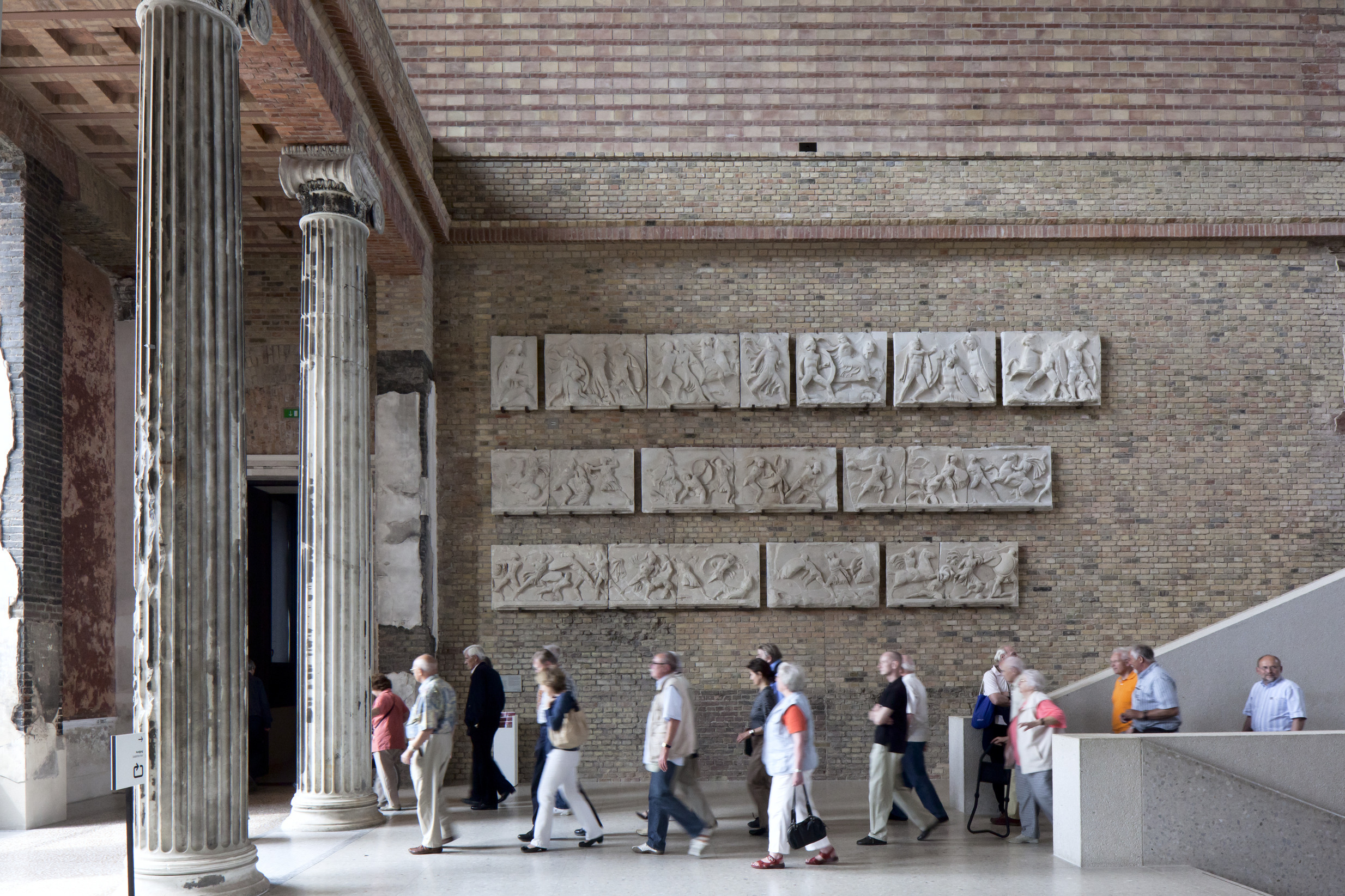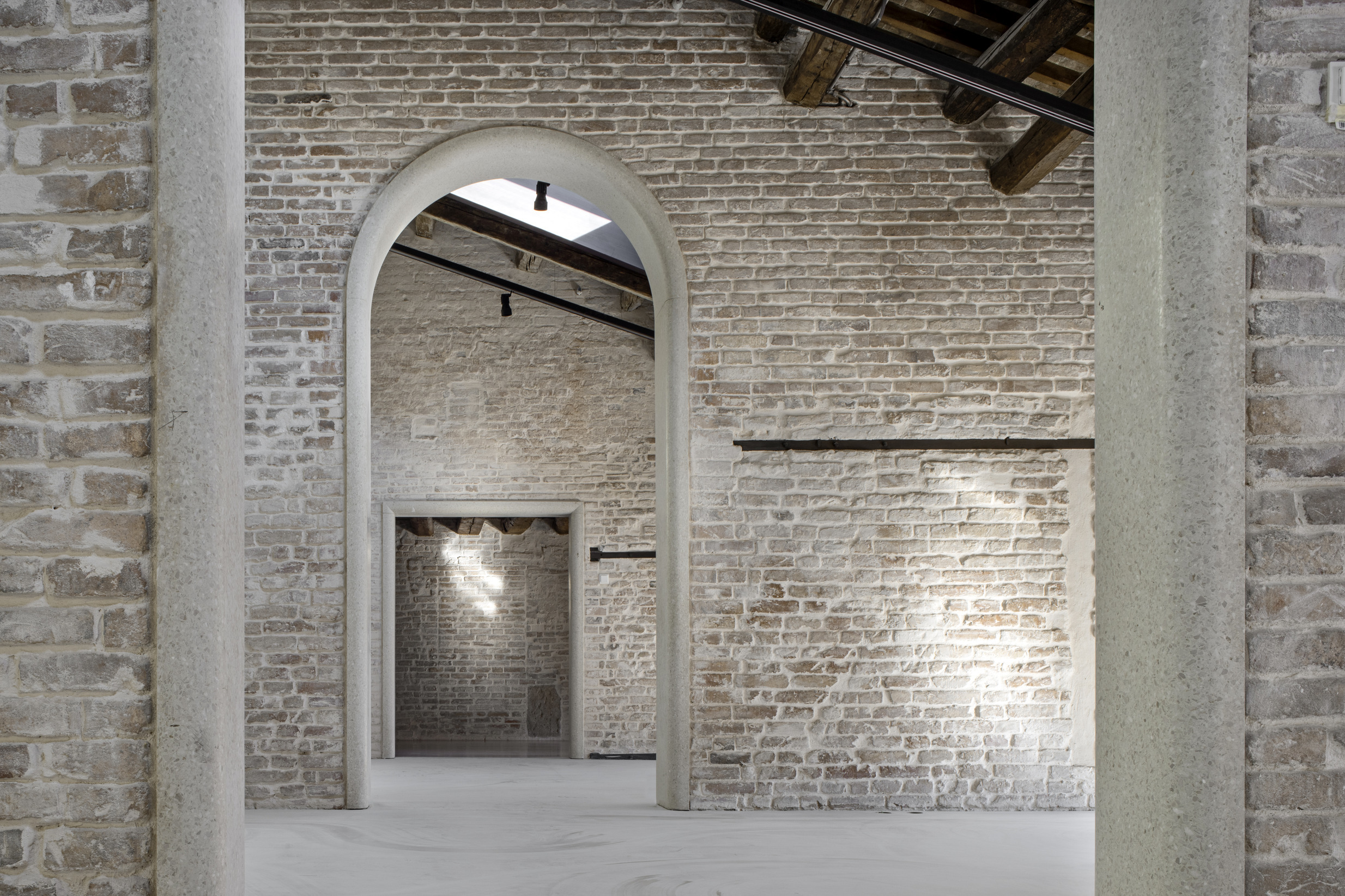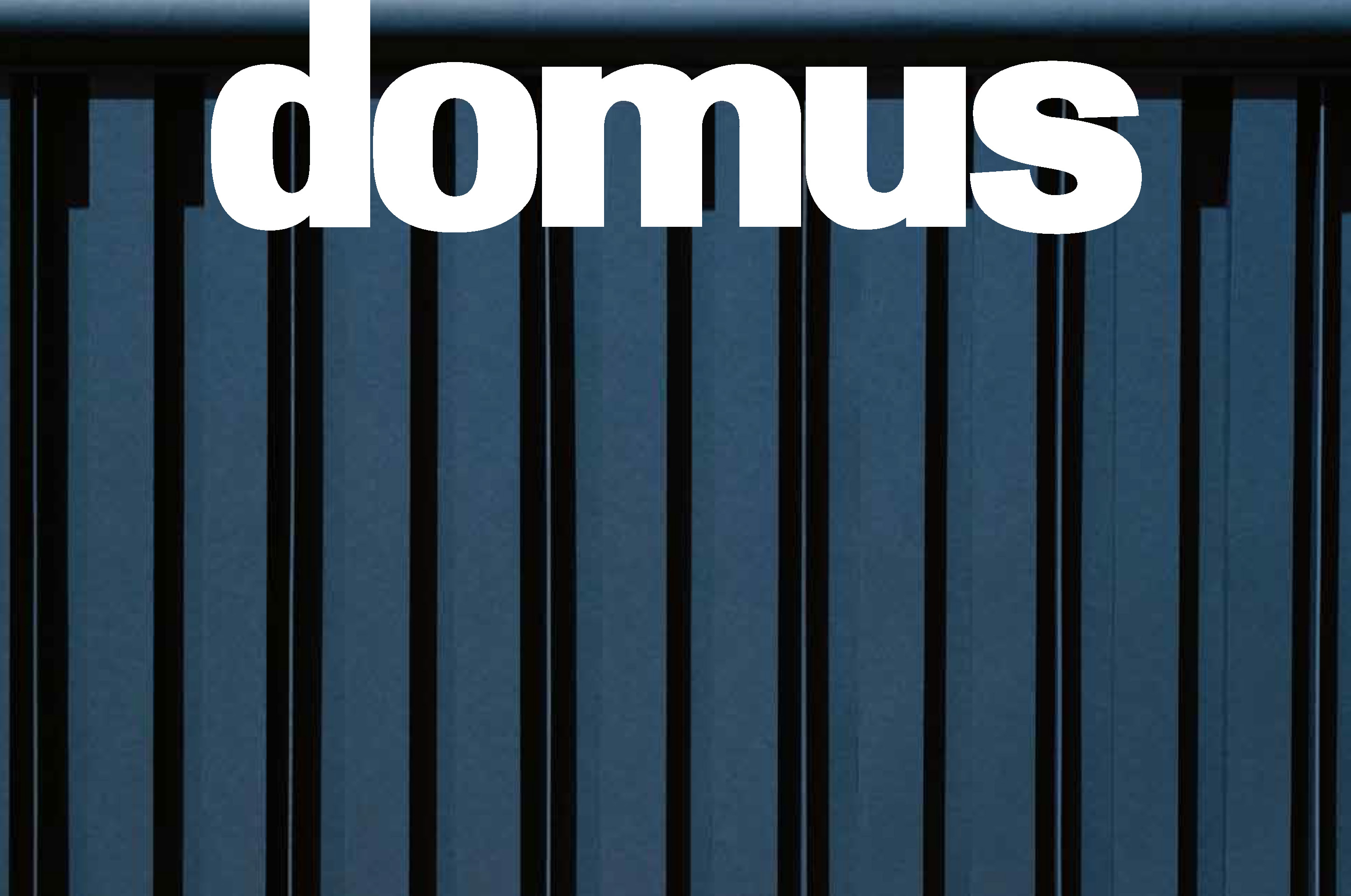Wondrously ornate is the stone of this wall, shattered by fate; The precincts of the city have crumbled, the ancient work of giants Is fallen into decay.
These are the opening lines of The Ruin, an anonymous poem dated to the 10th century and surviving as part of a manuscript collection of Anglo-Saxon verse in the library of a Cambridge college. It also happens to be the earliest meditation in English on the sensory and imaginative impact created by a writer’s encounter with a building. The poet is fascinated by the moss-grown walls, the scarred tiles, ‘the wide red roof of vaulted beams’ and the skill with which the architect, ‘that bold-minded man’, contrived to bind the soaring columns together with hoops of iron.
As a lover of the tumbledown and the dilapidated, I understand how the nameless Saxon bard must have felt. Nothing quite equals a ruin as an image of human endeavour, a symbol of sheer obstinacy and persistence or a vehicle for moralising, and it helps if the surroundings cohere. For the full effect to work adequately, there has to be a suitable contrast set up between ideas of somewhere and nowhere. The finest ruins of all, as a general rule, stand in thick woodland, on the edge of deserts, concealed in olive groves, or else spring up suddenly among featureless stretches of ploughland and pasture. An essential quality of absence, created by elements such as fallen statuary, shattered inscriptions or even something so simple as the ruts made by ancient cartwheels in the stone threshold of a city gate, is enhanced by the unpeopled nature of the landscape.
According to these criteria, Berlin’s Neues Museum is hardly the most promising of ruins. The city itself, as a physical entity, has always been something of a paradox. ‘How’, wondered Stendhal, visiting in 1806, ‘can people erect a metropolis on sand so deep that your feet sink into it up to the ankle?’ Yet by the same token, the whole place, bombarded, divided and now substantially reinvented, has become a metaphor of survival, its monumentality as inextinguishable as the mingled energies of its street life. Permanent on top of its sandy impermanence, the somewhere shows no signs of turning into a nowhere, as its refurbished buildings demonstrate, even those which, like the Schloss, no longer exist except in the memory of older inhabitants.
In this context there was a defiant quality, a sort of gruff, insouciant shrug, about the Neues Museum when I first visited its blackened carapace almost a decade ago. This was in February, when neither the weather nor the light was calculated to offer a specially flattering introduction to the building, but this gloom managed somehow to enhance the air of sturdy autonomy clinging to Stüler’s ravaged masterpiece. The presence of cement mixers and scaffolding wasn’t necessarily a guarantee of continuity or work in progress. Given what was happening elsewhere in Berlin at that time, with every street, square, palace or hinterhof turned into a building site, these elements seemed just as much decorative as practical.
What, in any case, was to be the museum’s ultimate destiny? The idea of it as hanging on, awaiting its hour, a creature of patient wisdom ‘cased in the unfeeling armour of old Time’, (1) had unquestionable appeal. Sooner or later the skirmishing would inevitably start as to how much of the surviving structure should be left to speak for itself and how cosmetic the process of restoration was intended to be. The most compelling image I retain of the building at this unresolved phase of its life is that of the great staircase hall without its stairs, forlorn beneath Stüler’s soaring triple-light windows, their symbolism of enlightenment seemingly redundant. No wonder David Chipperfield, proposing the Neues Museum’s recovery, spoke of the ‘dramaturgy’ within this particular space. The word provides a key to the whole work as finally revealed to us. Drama is the most inalienably human of art forms, but the actors in this play have not been confined to the dedicated team which has overseen the project’s passage to completion. There is a chorus formed by public opinion, by official voices from the state and the municipality, not to speak of professional experts, architectural journalists and critical onlookers. The scenario also embraces that element which playwrights and directors demand as essential to an authentic theatrical experience, the audience as involved participants, fully responsive to the ebb and flow of what is, as far as I can tell, a unique dramatic narrative.
Representative members of this cast have gathered in the vestibule of the completed Neues Museum. It is another chilly February day, ‘the same, ten years later’, as dramatists use to indicate as their setting for a final act. Never underestimate the continuing significance of time in a plot such as this one. Sadder and wiser by dint of experience than when we last appeared on this stage, we look for some kind of transfiguration or epiphany to redeem us. This is that kind of drama.
Almost at once the building’s singular physicality gets to work. That ‘in my end is my beginning’ quality which seems to be part of the Museum’s inherent wisdom, something surely intended by Stüler himself, appears in the way David Chipperfield has allowed sections of the fabric’s brick core exposed by the trauma of bombardment and the subsequent ravages of the weather to play a significant role. A complete language of brick, enunciated by the different layerings, shades and surfaces laid bare for us by walls and vaulting, starts to resonate as part of that spectrum of damage presented to us elsewhere by shattered ceilings, chipped columns and cracked plaster.
The effect, we soon realise, is that of a palimpsest, a surface on which any number of texts have been written but only imperfectly erased, so that it becomes possible for us to trace earlier fragments under existing lines. I’m reminded – and the link is scarcely accidental, given 19th-century Germany’s absorption with classical antiquity – of those innumerable buildings in present-day Rome where masonry from the Middle Ages and the Renaissance has incorporated arches, columns or stretches of brickwork from temples and palaces dating from the time of the Caesars or even earlier. Italians sometimes call this edilizia fagocitosa, ‘phagocyte building’, because the visual impression is that of a digestive process in its initial phases, one structure, as it were, eating another and temporarily frozen in the act, so that the older material never wholly disappears. This is, if you like, the architectural equivalent of the ghost story, in which a ‘presence’ hangs over a particular locality so as to remind its residents or visitors that some promise or act of recompense has been left unfulfilled.
Fulfilment in the present case involves the Neues Museum being allowed by this means to tell its own story of hopes, expectations and assumptions over the course of 170 years. In the thrilling vista through the main exhibition halls, another of the overall drama’s dominant episodes, we can see the synthesis of fragments and interpolations as a spirited dialogue, harmonious but carefully unresolved, a continuing pulse in the body of the museum. ‘The form remains, the function never dies.’ (2) This line from a favourite poem drums in my brain as we move from room to room, and it becomes ever clearer that David Chipperfield and his collaborator Julian Harrap have linked this kind of continuity to a deeper awareness of enduring line and volume within Stüler’s building.
Such traces of the original décor that do survive are the more enthralling for their mercurial, fugitive quality, like the swatches of a couturier or the melodic jottings in a composer’s notebook. I’m captivated by a sudden burst of blue on an Egyptian ceiling, a celestial cosmology complete with gilded hieroglyphs and a parade of constellations, evidence of the Prussian architect’s belief that the exhibits on display should be presented to the viewer within a suitably sympathetic environment. As for the pillars and colonnades throughout the museum, these, more than any of the other architectural components, seem deliberately intended to elude our cravings for homogeneity in the visual language governing a decorative scheme. The museum is having none of such banality. There are great soot-blackened Grecian sequences, their Corinthian capitals and flutings chipped and abraded; there are Romanesque arcades conjured up from a memory of Italian church porticoes; doorways are flanked by elegant caryatids; and columns suggested by Philae or Luxor carry authenticating lotus patterns around their bulbous bases.
Most compelling for me of all such features is the frieze surrounding the so-called Griechischer Hof, not least because of the pitiless abruptness with which the walls underneath the handful of plaster fragments still clinging to its lower edge fall away into the starkness of elemental brick, with something almost menacing in the line of blind windows below. Both in style and theme, this set of high-relief sculptures by Heinrich Schievelbein is among the most flamboyantly ‘period’ items in the surface adornment of the museum. Its subject is The Last Days of Pompeii, the title of Edward Bulwer Lytton’s late-Romantic historical novel, whose clever filtering of a modern zeitgeist through the prism of the classical past made it profoundly influential on readers throughout 19th-century Europe. The sculptured pageant serenely proposes that Pompeii should rise at last from centuries of entombment under layers of volcanic ash. Transcending the doom of history, it is to be reborn under the wise dispensation of Berlin’s Neues Museum, where its artefacts will be exposed to view after eighteen hundred years of oblivion.
Schievelbein’s Pompeiian frieze adorns a vast court to the south of the staircase hall. From the other side David Chipperfield’s personal intervention as a living architect enters the discourse in the shape of a projecting platform beneath concrete posts and beams, with a glass roof above it. The surprise of this is total, both in the way it creates another zigzag in a continuously engrossing narrative and because it offers no obvious compromise with the decorative melange encountered elsewhere in the building. This is Chipperfield’s signature on the Neues Museum, inscribed not as a gloss or footnote to the prevailing text, let alone as some arrogant graffito or ‘tag’ jostling for our attention, but as a carefully-meditated independent episode, consistent in its simplicity with the idealism inspiring the original building. The platform’s distinctive linearity, with a sudden intensification of light as we enter it, inducing a sense of bleached, heat-soaked walls, presents us with an atmospheric counterpart to Stüler’s lotus columns and astronomical map of the heavens by evoking another Egyptian impression altogether to contextualise the pharaonic treasures on display.
I cling to this place as a moment of stasis among the rhythms and pulses of the building, like one of those crucial rests in a musical score where the spaces between each unit of sound become as audible as the notes themselves. Equally potent is Chipperfield’s other addition to the museum, in the form of a tower at its south-eastern corner, an invention as different from the platform in character and associations as it’s possible to imagine. Kiln, tomb chamber, oasthouse, beehive or dovecote? The structure arrests us initially by an intrinsic playfulness in its proportions, those of a brick rectangle which somehow resolves itself into a sinuous chimney soaring towards the cupola. Yet the unadorned immensity gathers within it a feeling of something far older than both the Neues Museum or indeed most of the archaeological riches contained here. Shapes as primal as this one, which seems to have been scooped out of its brickwork in one colossal tug of clenched fingers, return us to the Anglo-Saxon poet of The Ruin marvelling at ‘the ancient work of giants’.
Just as the platform responds to already existing features in the building that have survived the damage done elsewhere, so the tower’s curving hollow seems an inspired improvisation on another noteworthy structural theme in certain of the halls and galleries. This is Stüler’s use of terracotta bowls and pots in the creation of the ceilings, so as to take the weight off the foundations, thereby challenging those who doubted that anything so grand as the Neues Museum could be raised on the treacherous sands of the surrounding island. Here and there a glimpse of the earthenware in these miniature domes transports us to that Mediterranean world for which German fantasy has pined since the days of Goethe’s Mignon, with her onging for ‘the land where the lemon trees bloom’. Surely some of the light irradiating the museum comes not from the inexorable clarity of a Berlin morning or from the high ideals and meticulous disciplines of Prussian scholarship, but from this simple hankering of the north for the south’s promises of warmth and luminosity.
It’s in the staircase hall that we grasp most effectively the truth that this building is more than the sum of its parts as the handsomest of vessels for a historic collection of antiquities. The welding of pre-cast concrete stairs to the beetling cliffs of brick at either side reinforces notions of survival and endurance, leaving the rule of light triumphant, ‘restoring intellectual day’ from those tall upper windows. The momentum within Chipperfield’s concept of the staircase itself is as resistless as that created by the monumental flanking walls and those immense wooden roof trusses above them. The dramaturgy Chipperfield acknowledged in confronting the project is fully engaged and the rationale behind the broader enterprise of recovery and completion justifies itself most eloquently at this crowning instant.
The anonymous poet of The Ruin refers to the architect of the hall in the midst of the derelict city as ‘that bold-minded man’. David Chipperfield’s boldness has carried him further than a simple act of restoration, however comprehensive its reach. Responding to the eclecticism of the original designs, with their Etruscan-style ironwork, echoes of French Baroque landscape painting, evocations of the progress of German history or frescoed mythologies set within a Renaissance octagon, the modern architect has enlarged their combined perspective on the past to embrace another kind of inheritance altogether, Berlin’s own momentous experience of the 20th century, in which the world’s share has been universal. When I first saw the museum, I recall contrasting its prospect of apparently irredeemable bleakness, shadow and decay with the enthusiasm and conviction of Chipperfield and his team as they prepared to embark on the project. The redemption finally achieved, in which a new work is nurtured by an older one, constitutes an act of trust, not merely in the building and its creator but, perhaps more significantly, in humanity itself. That staircase hall is a challenge as much as a solution.
1 Line from the poem Elegiac Stanzas, Suggested by a Picture of Peel Castle in a Storm, Paintedby Sir George Beaumont by William Wordsworth.
2 Line from the poem Afterthought byWilliam Wordsworth.
By Jonathan Keates
Neues Museum Berlin (2009)



